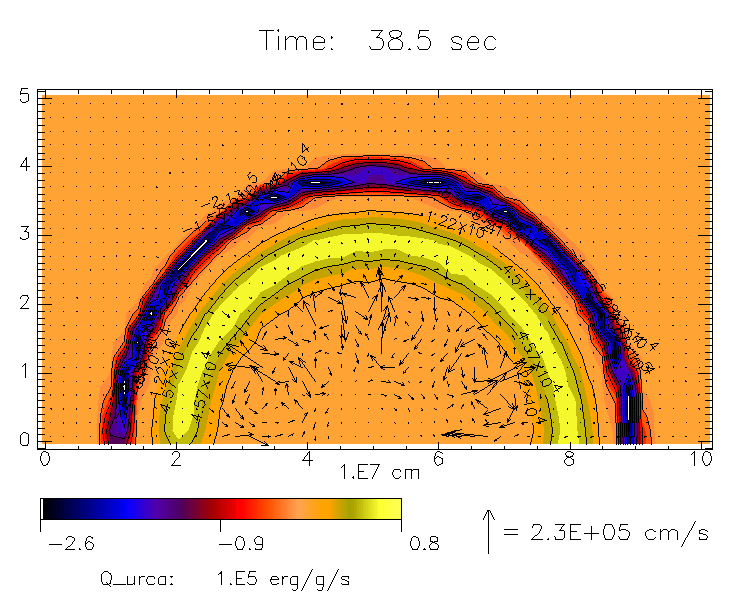The convective URCA process in white dwarfs |
After almost all their nuclear fuel has been exhausted, most stars contract and form white dwarfs. These are compact stellar remnants of the size of the Earth which are as massive as the Sun. If such a white dwarf accretes matter from a stellar companion, it can subsequently explode in a so-called type Ia supernova explosion. Supernova explosions are spectacular events which can still be observed at distances of millions of light years.
Recently, supernovae of this kind have received a tremendous amount of attention, since they can be used - given their enormous brightness - to measure the extent and the expansion of our Universe. For this purpose the dynamics of the supernova explosion has to be known very accurately.
One building block of the road that eventually leads to a supernova explosion is a process whose effects are hitherto poorly understood, and which could have a crucial effect on the dynamics of the explosion: the `convective URCA process'. This process affects the late stages of the white dwarf evolution and works as follows: Certain atomic nuclei such as neon and sodium exist in traces in white dwarfs. Close to the centre it happens to be energetically favourable for, say, a sodium nucleus to swallow an electron and thus turn into neon. The neon nuclei are then swept outward by rising convective flows inside the star, until the conditions are such that it is energetically favourable for the nucleus to eject an electron and turn back into sodium. These sodium nuclei are then eventually carried back by the convective downflows and the cycle starts again. Whenever the nuclei swallow or release electrons, they also emit neutrinos. Neutrinos are elusive particles that virtually do not interact with matter. They can leave the star unhindered and carry away energy. Thus this process could effectively cool the star and therefore delay the explosion.

|
| Figure 1 |
Here, at MPA, we have simulated this process for the first time in two-dimensional computations using the Cray T3E supercomputer of the Rechenzentrum Garching. One of our results is displayed here. Arrows indicate the velocity of the matter in the star and colours show the cooling and heating by the URCA process (red means heating and blue cooling). Visible are the convective cells that swirl around the stellar gas and drive the URCA process. Insights obtained from these simulations will help to determine how the URCA process changes the evolution towards the supernova explosion. Our first results suggest that the convective URCA process causes a slower heating of the white dwarf and might thus lead to higher densities. This, in turn, can affect the dynamics of the explosion as well as the nucleosynthesis products ejected by the supernova.
| MPA-Home |